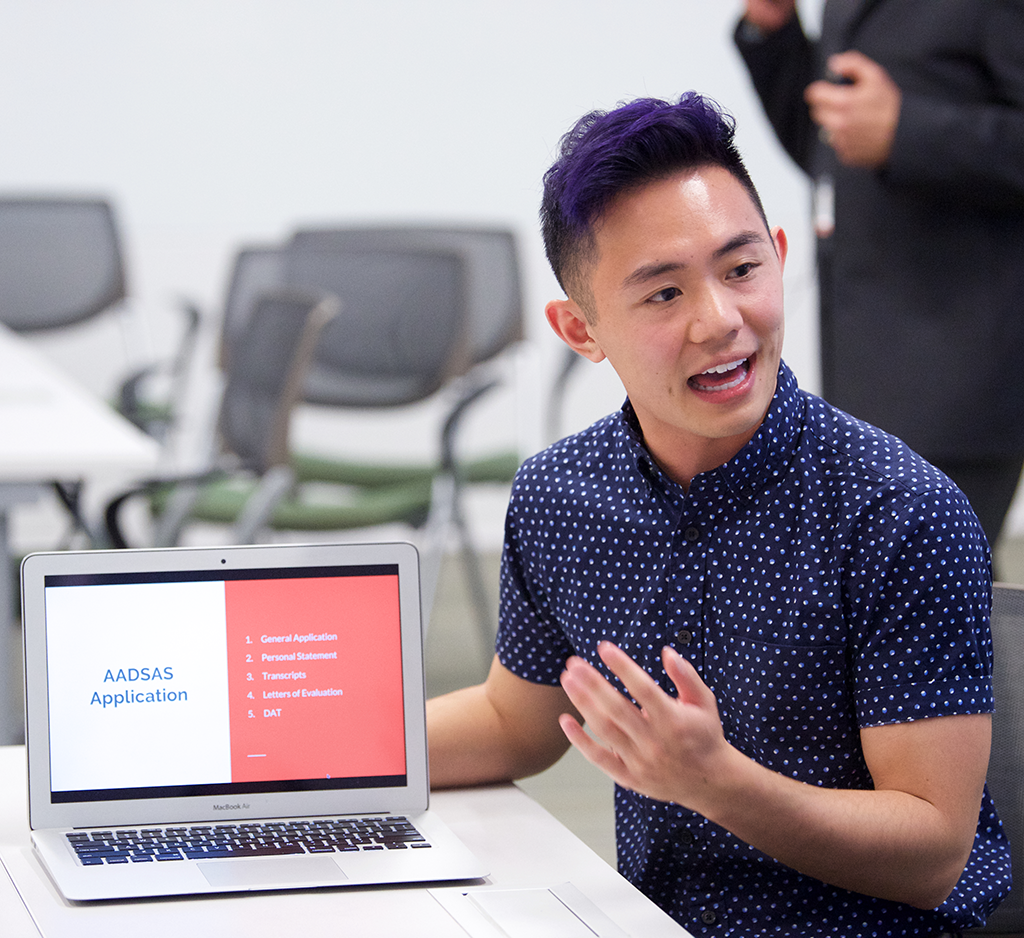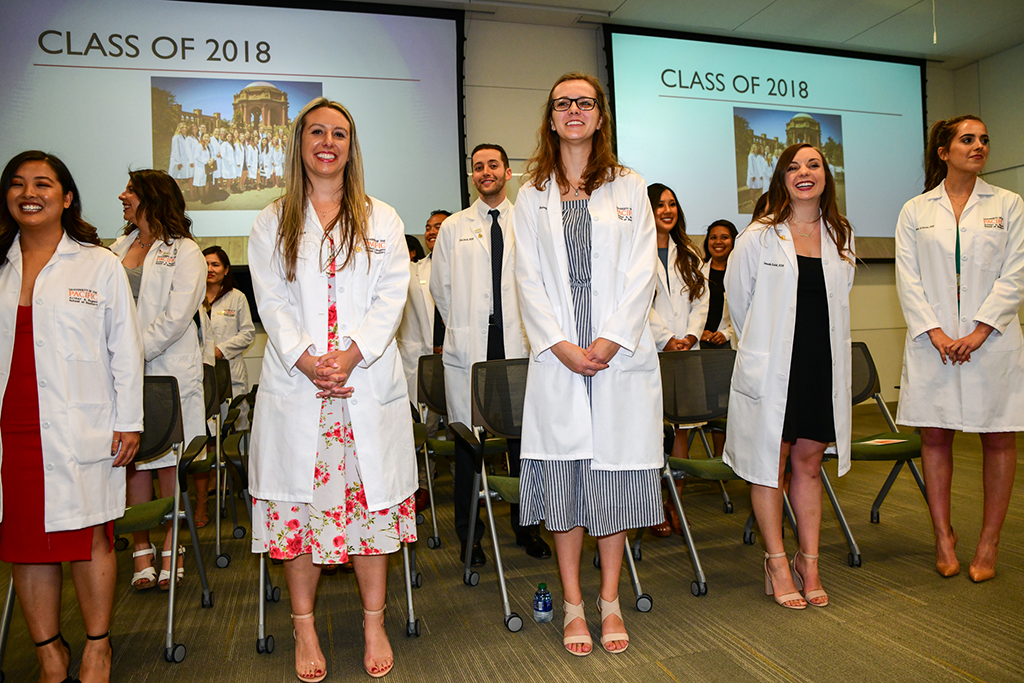By Christina Boufis
On June 17, 2018, 20 University of the Pacific dental hygiene students made history when they walked across the stage along with their graduating Arthur A. Dugoni School of Dentistry dental student peers to receive their diplomas. This year’s graduating hygiene class was the first to begin and end their training in San Francisco at the dental school’s campus in the South of Market area.
Since its inception in 2002, University of the Pacific’s baccalaureate Dental Hygiene program has always held its graduation ceremony in San Francisco, but their home program was located 90 miles away on the Stockton campus. The move to San Francisco was several years in the making, says Deborah Horlak, RDH, director of the Dental Hygiene program and associate professor in the Department of Periodontics.
The main reason for relocating the program? “We’re part of a dental team, and we weren’t really experiencing that teamwork as part of the curriculum,” explains Horlak. “Our dental hygiene students had been going on rotation to San Francisco for a week two times during their senior year, so they had a little bit of connection with the dental school, but it was really difficult to feel part of it when they were two hours away.”
In addition, while the Stockton campus had a small dental clinic where hygiene students worked with Advanced Education in General Dentistry (AEGD) dental residents, the residency program moved a few years ago. “So, there was just a dental hygiene program alone with no dental support,” says Horlak.
And the reverse was also true. Back on the San Francisco campus, “Our dental students didn’t really have appreciable exposure to working with dental hygienists as team members,” says Dr. Cindy Lyon ’86, associate dean for oral health education, and the founding director of the Dental Hygiene program. “The hope was that in moving the dental hygiene students here, both would gain experience working with each other. And integrating them into the larger student body offered some interesting opportunities for faculty development as well—and for the dental hygiene students to be a greater part of the dental school culture,” says Lyon.
History of the Dental Hygiene Program
Originally, Pacific’s Dental Hygiene program was born out of a need for more hygienists in the Central Valley. Market supply was small, and alumni in Stockton and the Central Valley had advocated for a hygiene program there, explains Lyon.
The Dental Hygiene program was the first 36-month program leading to a bachelor of science degree in dental hygiene in the United States. It prepares students for positions as clinicians, educators, researchers, public health and industry professionals. About 235 dental hygiene students have graduated from the program so far, according to Horlak.
Growing Pains
As with most new ventures, there were some growing pains when the program moved from Stockton to San Francisco. “I knew that since we were the first class, there would be a lot of changes and things we would have to work through,” says Nadine Mendoza, ’18 DH, who served as hygiene class president.
“Professor Horlak made it clear that we were going to be pioneers and trailblazers for the program. Granted it wasn’t an easy process for us,” Mendoza says. “It took a lot of different ways for us to integrate, including attending huddles with the dental students and hosting “lunch and learns” to educate them about what we do as hygienists. It was also important for us to learn how the dental students function in the clinic. The collaboration ended up being one of the highlights for me.”
Classmate Allison Shea Yochim ’18 DH says that blazing a new path was worth it. “The program demanded a lot of us,” Yochim says. “Because the faculty taught us well, and we showed that we were competent, friendly and collaborative, we earned the trust and respect that’s so crucial to delivering the best patient care.”
Several Firsts
Since the program is now based on the San Francisco campus, hygiene students are paired with second- and third-year dental students in group clinics with the goal of mirroring the relationship they might have in private practice—communicating about ideal patient care, diagnoses, treatment plans, ongoing re-care and the timing of dental and dental hygiene visits, explains Lyon.
“Being able to work alongside the dental students and get a real taste for what it would be like working in practice was a highlight for me,” says Yochim. “And I also don’t think many other programs offer such state-of-the-art facilities,” she adds. “Everything was new and high quality, and very clean and modern. It immediately conveys a sense of professionalism to patients.”
Virtual Dental Home
Another first was the opportunity to participate in the school’s Virtual Dental Home program, where hygiene students travel to remote facilities, such as schools, group homes or nursing homes, to provide oral health care. Students typically see one or two patients per session, conduct an exam, provide onsite care, such as prophylaxis, X-rays or sealants, and collect as much data as possible to send back to the dental students offsite who would review the patient’s chart and create a treatment plan, explains Mendoza.
The Virtual Dental Home program is a public health model of care, explains Horlak, and “a way to help more people.” It’s also a win-win-win for patients, dental hygiene students and dental students alike. Patients who may not be comfortable receiving care in a clinic can be treated in familiar surroundings. “The dental students are learning how to be the dentists back at home,” says Horlak. “And, the hygiene students are learning how to be hygienists who go out to remote sites.”
Being part of the first class to be integrated with the Virtual Dental Home was a unique experience and one that helped shape her future career, says Mendoza. “It was one of the things that continues to draw me into public health and to go out into the community to serve people who can’t necessarily access dental care.”
After getting her license, Mendoza plans to work in private practice to gain more experience. Then, she’d like to pursue public health or potentially even go into teaching. “My main goal is to work in underserved communities,” she says, “whether in the United States or in different countries to teach oral health and the prevention of periodontal disease.”
Unforeseen Benefits
In addition to the goal of working more collaboratively with dental students, there were unexpected benefits of moving the program to San Francisco. As the alumni and California Dental Hygiene Association (CDHA) and American Dental Hygienist Association (ADHA) representative for her class, Yochim was so inspired by the passion and generosity of donors to the dental program that she helped create the first-of-its-kind Dental Hygiene Excellence Scholarship.
The scholarship, started jointly with the DH Classes of 2018 and 2019, will be awarded to those students most in need of help with end-of-year expenses, such as testing and licensing fees, which can really add up, says Yochim.
“No other dental hygiene class has started a scholarship,” she says. “And I think being in San Francisco and near the dental students not only provided the obvious benefit of having a realistic private practice working relationship, but it also provided a lot of opportunities that weren’t anticipated at the outset, such as knowing how we can do something about decreasing the financial burden for dental hygiene students.”
While she is interviewing for a dental hygienist position in the Bay Area, Yochim continues to be involved with the CDHA. “I’ve learned that it’s so important for people to be involved in their professional associations, whether dentists or hygienists, because it really determines the future of our profession,” she says. And she sees a future for herself in both private practice and advocacy work.
Planning for the Future
What’s next for the current matriculating and future dental hygiene classes? “Moving forward, I hope that our Virtual Dental Home program becomes even more robust,” says Lyon. “That’s a program that not many dental hygiene students in the country have the opportunity to participate in, so it would be great to see it expand.”
“I think we would all love to see more courses where our dental students and hygiene students can participate together,” says Lyon. “The curriculum is currently going through some exciting updates, and I hope the content and sequencing are such that dental hygiene students can learn right alongside our dental students.”
As for the DH Class of 2018, they not only helped smooth the transition for their program but also kept their eyes on making things easier for future classes, says Horlak. “I think we could not have had a better first class,” she says. “They had a lot of good ideas about how things could operate better. And they were always thinking about the next class. They were a big part of the reason the transition to the San Francisco campus was so successful.”
For recent graduates and future dental hygiene students, the future definitely looks bright.
Christina Boufis, PhD, is a freelance health and medical writer from the East Bay.
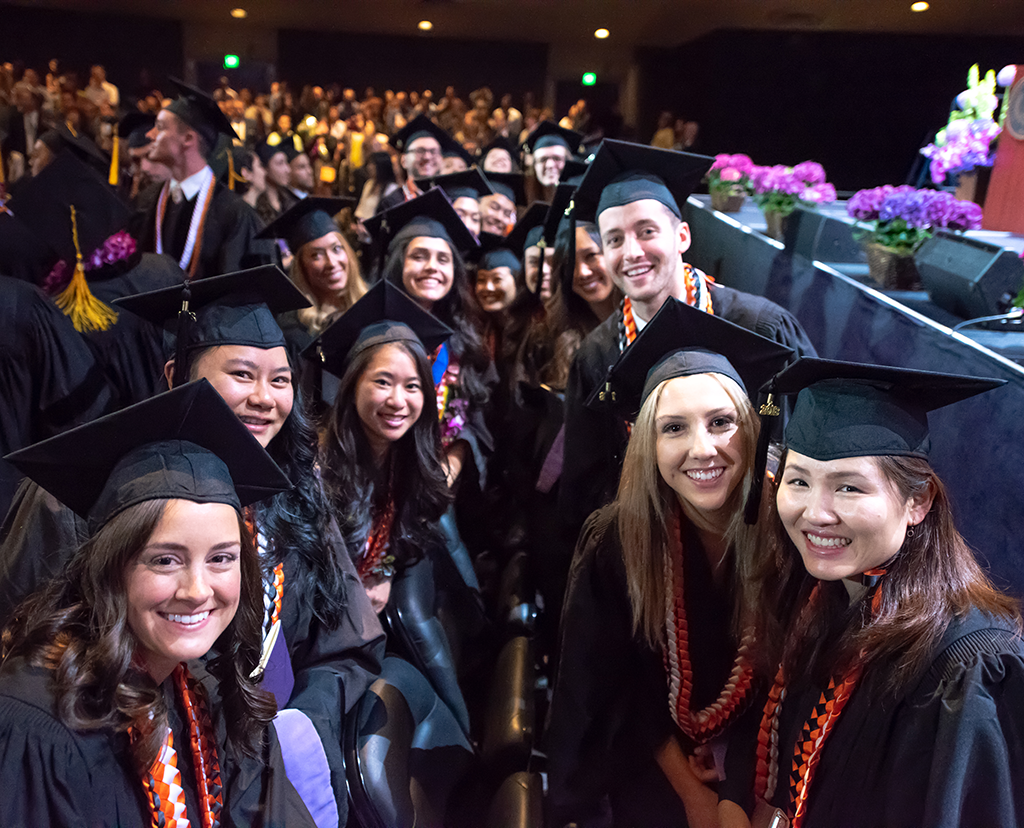
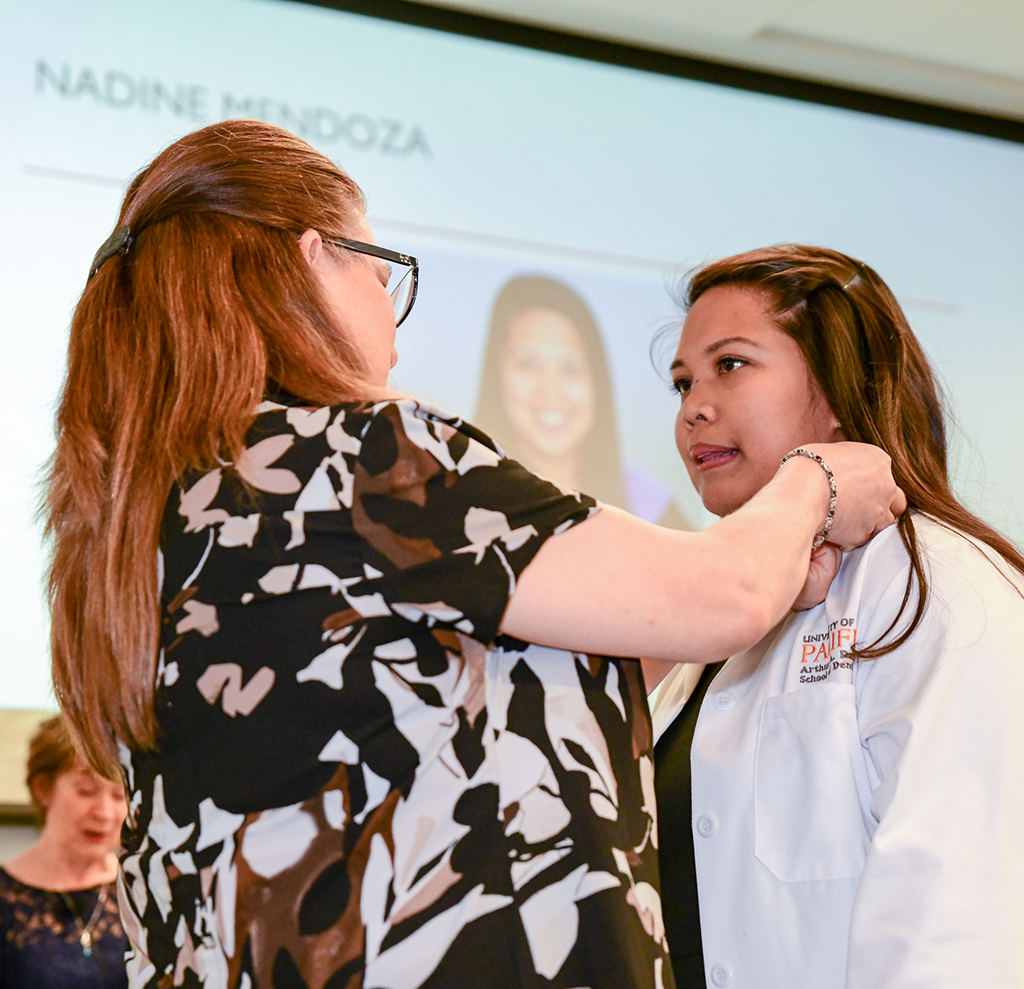
Nadine Mendoza 
Allison Yochim 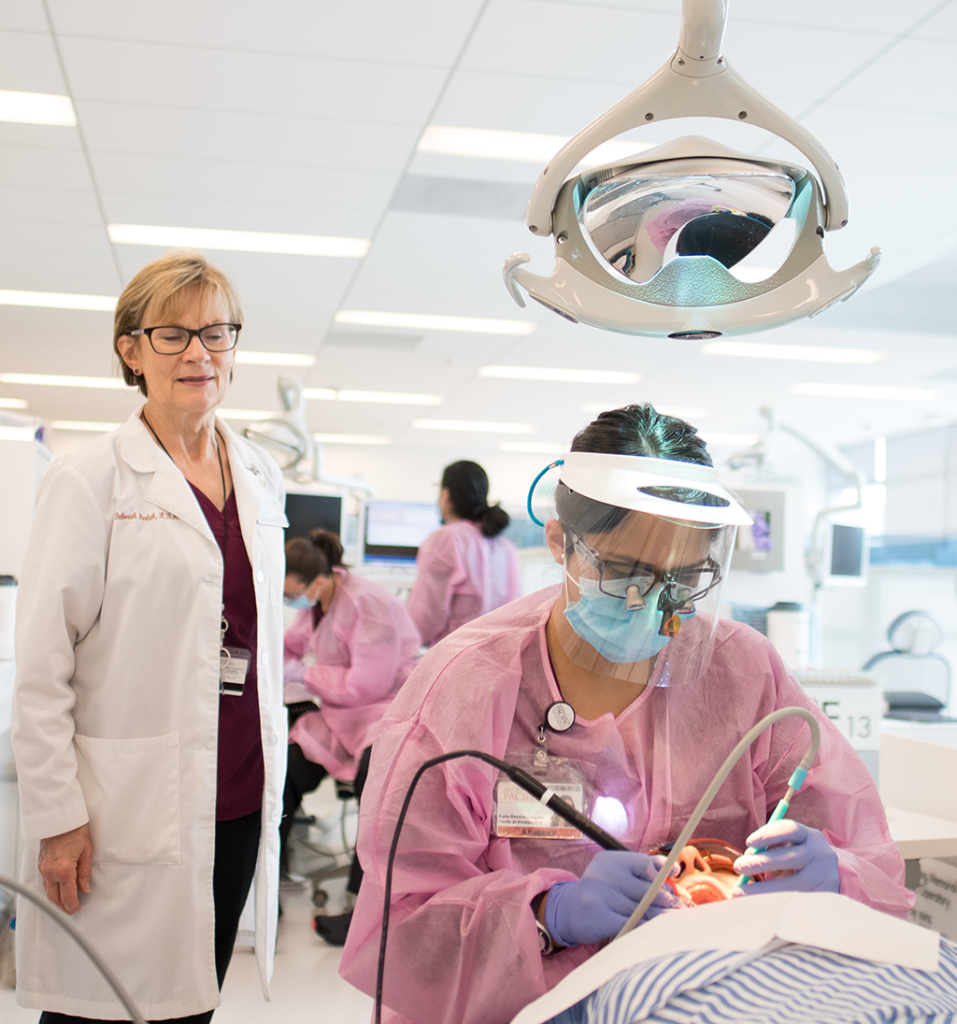
Deborah Horlak 